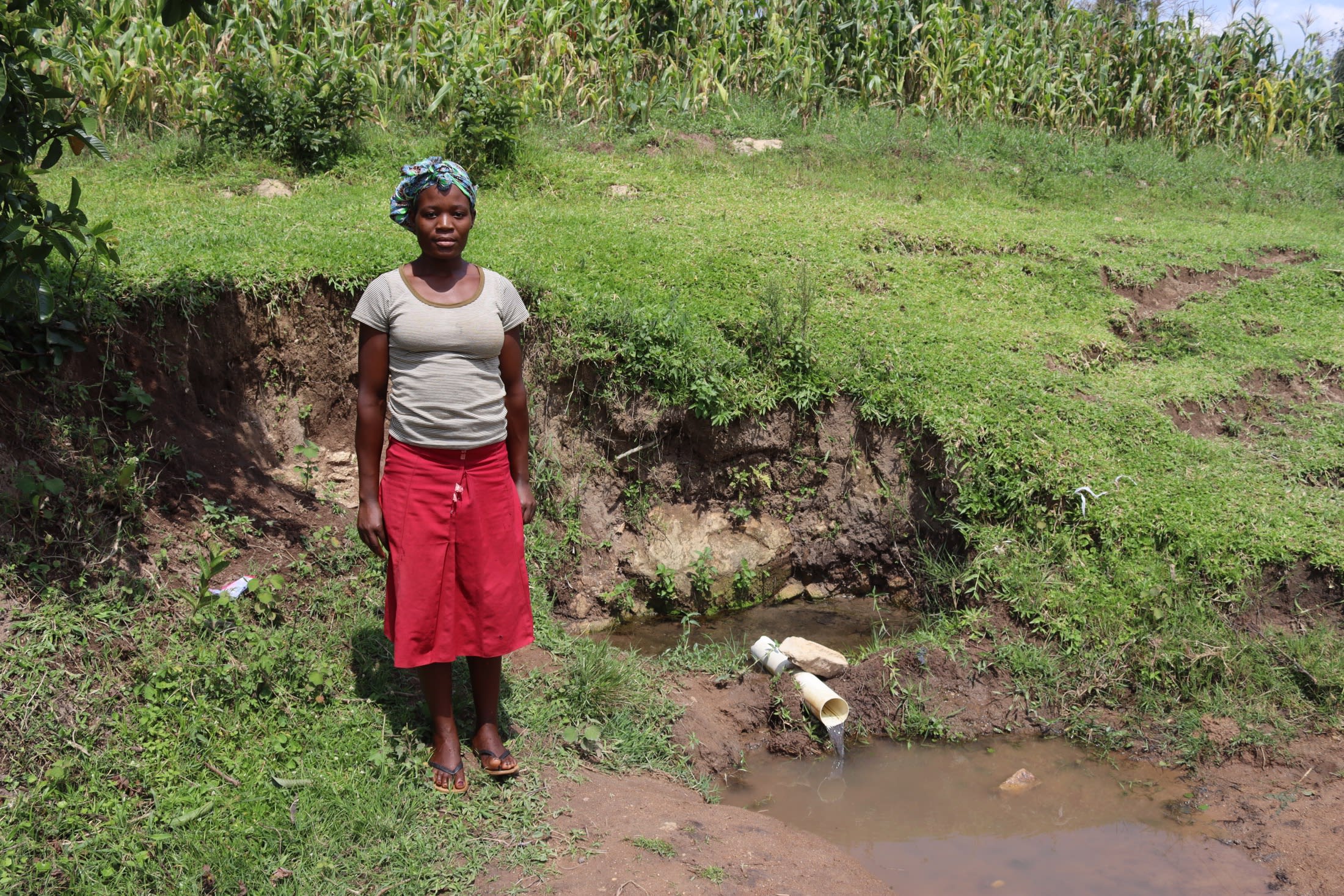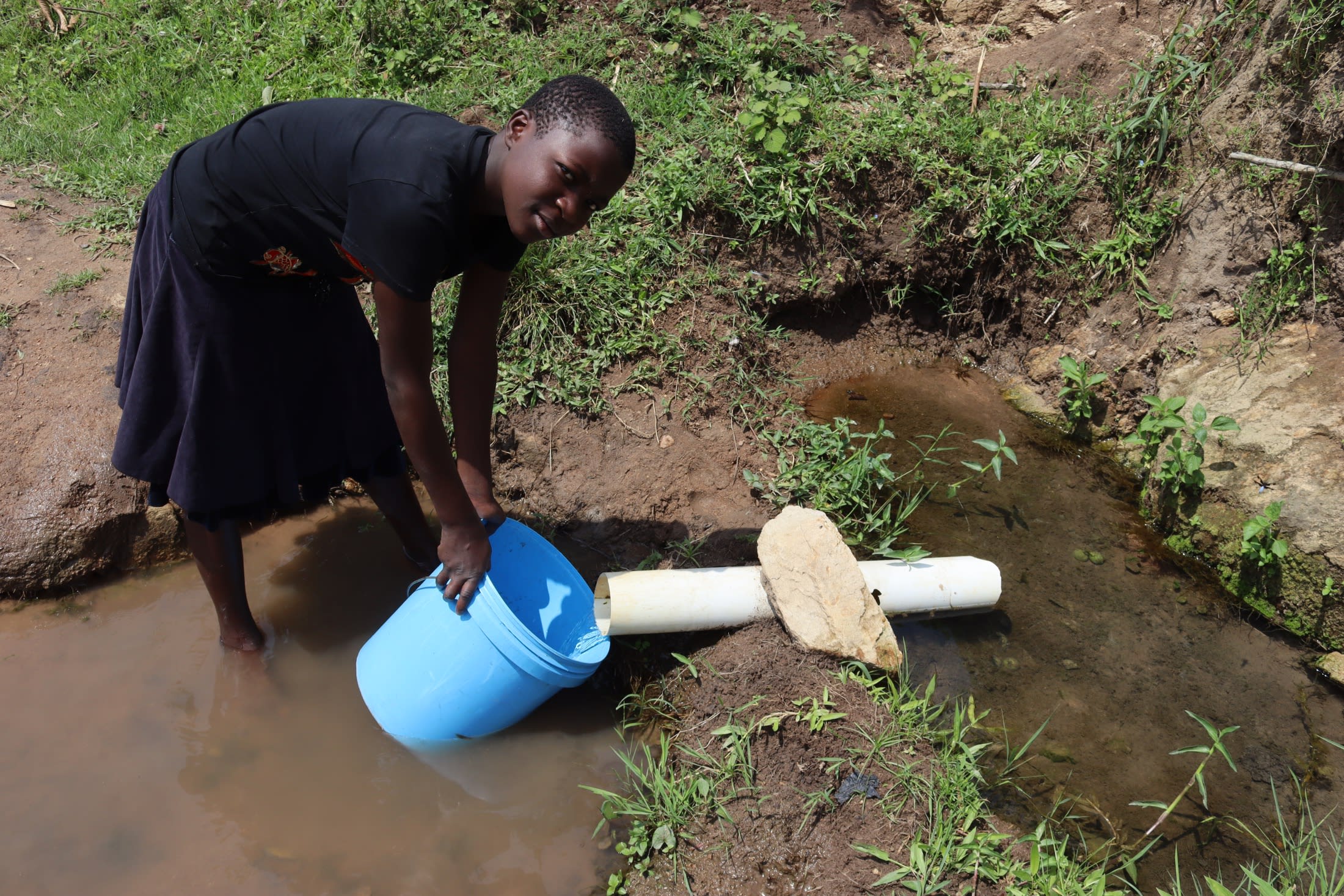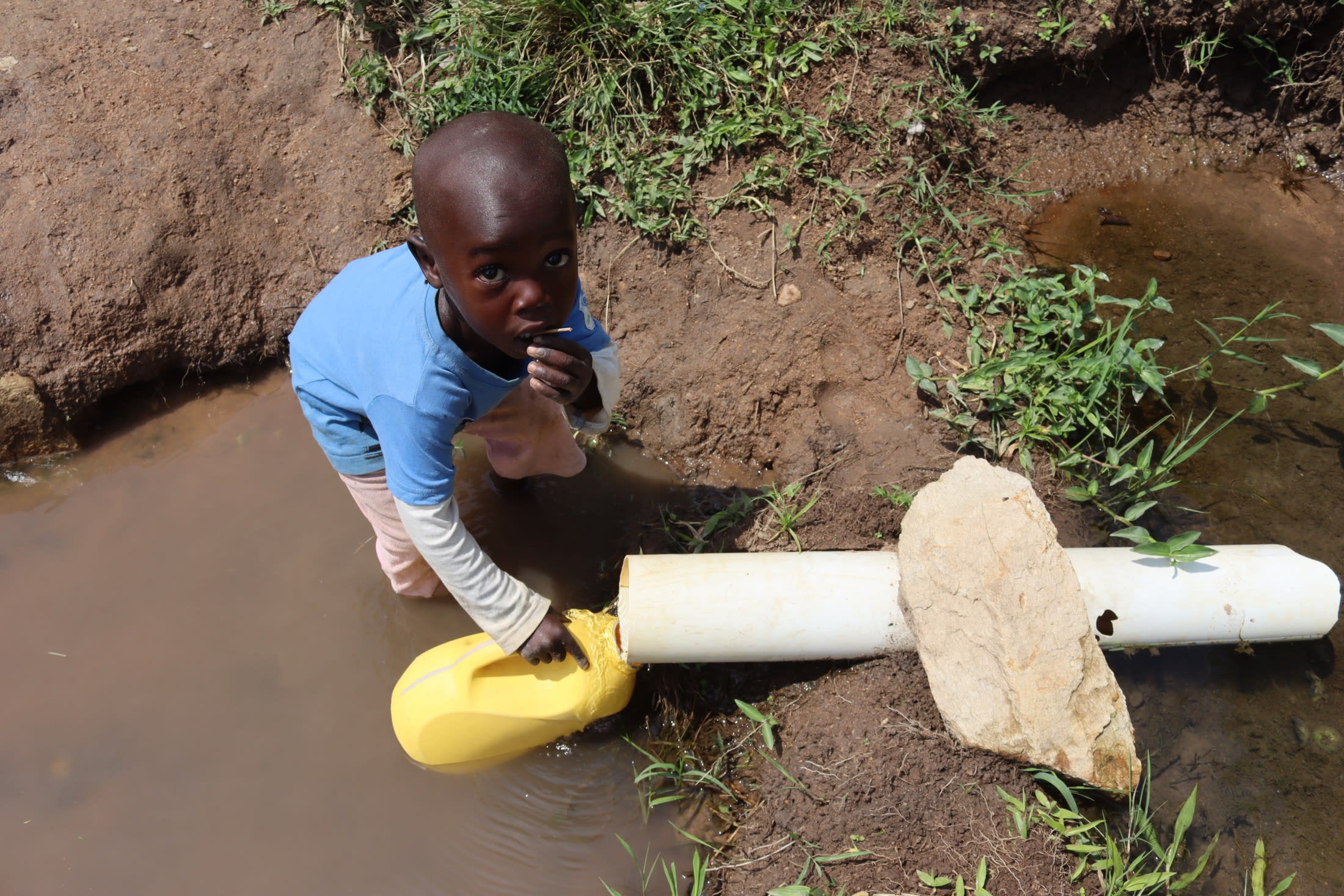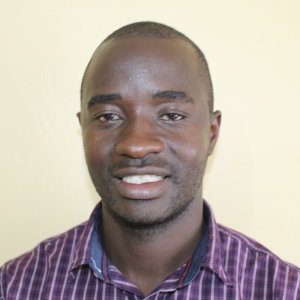The 315 people of Mahondo fetch water from an open spring surrounded by farmland and shared with animals, both domesticated and wild. This renders the water undrinkable, but people drink it every day. There is no other water source nearby, leaving these people with no other choice.
The sources of contamination that pollute the water make up a near-endless list: fertilizers used at the adjacent farms, storm water runoff, human activities like laundering and bathing, animal waste, and plenty of unseen pathogens, which thrive in conditions like these.

"When [my children] get sick, it is very expensive to get medical services because health facilities are far away," 36-year-old Judith Andeyo (in the above photo) said.
Diarrhea and diarrheal disease are extremely common causes of malnutrition and death in children under five years old (WHO).
"When I get sick after drinking the water, I do miss school, and also I cannot attend Sunday school lessons," said 13-year-old Angel M (in the photo below). "I sometimes suffer from [a] sore throat that makes [it] uncomfortable to speak."

During the wet season, the ground becomes saturated with rainwater, so anyone who fetches water here must step carefully to avoid slipping in the mud. Year-round, people must wade in the water in order to fill their containers, which is not only uncomfortable, but it can be dangerous for vulnerable community members like children, pregnant women, and the elderly.

One small blessing is that this spring never dries out, even during the dry season. However, this means that people from miles around come to fetch water from Andrico Murunga Spring. The influx of thirsty souls makes for a lot of inconveniences like long lines and short tempers.
Judith added: "[I] am always worried when [the] dry season sets in and many people start streaming to collect water from this source. During such moments, we experience long queues, and sometimes I fear sending my children to collect water because it will be time-consuming."
Long queues have deeper implications than just wasted time. People often get less water when there are long lines, which means people end up dehydrated, unable to bathe, and, ultimately, sick (Sphere Standards).
Without intervention, the people of Mahondo will continue waiting, getting sick, and spending their hard-earned income on medication. But a protected spring with a convenient discharge pipe and easy-to-access stairs will significantly cut down on wait times, and naturally filtered water will prevent future water-related illnesses.
What We Can Do:
Spring Protection
Protecting the spring will help provide access to cleaner and safer water and reduce the time people have to spend to fetch it. Construction will keep surface runoff and other contaminants out of the water. With the community’s high involvement in the process, there should be a good sense of responsibility and ownership for the new clean water source.
Fetching water is a task predominantly carried out by women and young girls. Protecting the spring and offering training and support will, therefore, help empower the female members of the community by freeing up more of their time and energy to engage and invest in income-generating activities and their education.
Training on Health, Hygiene, and More
We ask community leaders to invite a select yet representative group of people to attend training who will then act as ambassadors to the rest of the community to share what they learn. We also communicate our expectations of physical distancing and wearing masks for all who choose to attend.
The training will focus on improved hygiene, health, and sanitation habits in this community. We will also have a dedicated session on COVID-19 symptoms, transmission routes, and prevention best practices.
With the community’s input, we will identify key leverage points where they can alter their practices at the personal, household, and community levels to affect change. This training will help to ensure participants have the knowledge they need about healthy practices and their importance to make the most of their water point as soon as water is flowing.
Our team of facilitators will use a variety of methods to train community members. Some of these methods include participatory hygiene and sanitation transformation, asset-based community development, group discussions, handouts, and demonstrations at the spring.
One of the most important issues we plan to cover is the handling, storage, and treatment of water. Having a clean water source will be extremely helpful, but it is useless if water gets contaminated by the time it is consumed. We and the community strongly believe that all of these components will work together to improve living standards here, which will help to unlock the potential for these community members to live better, healthier lives.
We will then conduct a small series of follow-up trainings before transitioning to our regularly scheduled support visits throughout the year.
Training will result in the formation of a water user committee, elected by their peers, that will oversee the operations and maintenance of the spring. The committee will enforce proper behavior around the spring and delegate tasks that will help preserve the site, such as building a fence and digging proper drainage channels. The fence will keep out destructive animals and unwanted waste, and the drainage will keep the area’s mosquito population at a minimum.

 Protected Spring
Protected Spring
 Rehabilitation Project
Rehabilitation Project











































